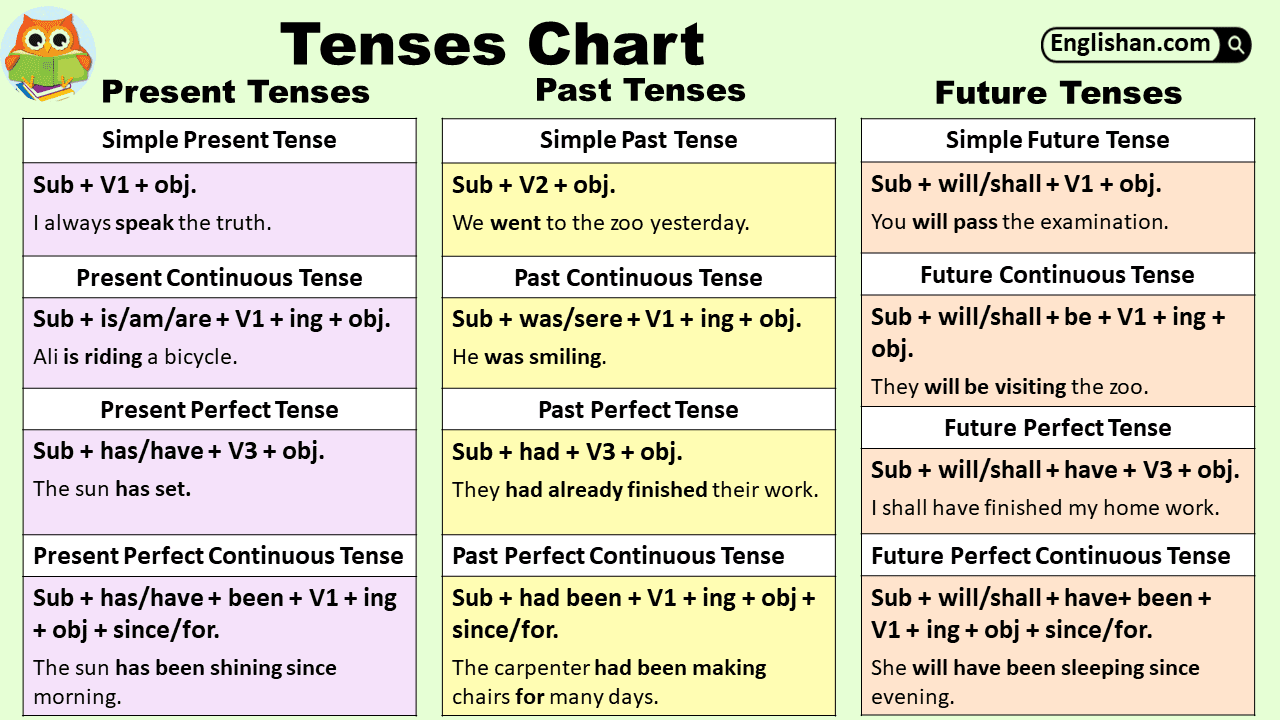Contents
The Simple Past Tense explains actions or events that happened and were completed at a specific time in the past. It is commonly used to describe finished activities, habits, and historical facts. This tense is essential for narrating stories, recounting experiences, or discussing past habits and facts.
Examples:
- Ahmed visited Lahore last year.
- They played football yesterday.
In these examples, the actions happened and were completed in the past.
Structures of the Simple Past Tense
The structure of the Simple Past Tense is simple and easy to learn. It uses the past form of the verb to express completed actions. Regular verbs add “-ed,” while irregular verbs have unique forms. Let’s explore the different sentence structures:
Affirmative Sentences
Structure: Subject + past verb + object
Examples:
- Fatima studied for her exams.
- The children watched a movie.
In these examples, the actions were completed in the past.
Negative Sentences
Structure: Subject + did not + base verb + object
Examples:
- He did not finish his homework.
- We did not go to the park.
Here, the sentences show that the actions did not occur in the past.
Interrogative Sentences
Structure: Did + subject + base verb + object?
Examples:
- Did Ahmed write a letter?
- Did they prepare for the meeting?
These questions inquire about completed actions in the past.
Double Interrogative Sentences
Structure: Wh-question + did + subject + base verb + object?
Examples:
- What did they do yesterday?
- Why did Sara leave early?
These questions specify details about past actions.
Simple Past Tense Chart
Subject-Verb Agreement
Subject-verb agreement in the Simple Past Tense is simplified, as the verb remains in the past form regardless of the subject. However, for negative and interrogative sentences, the base form is used.
| Subject | Past Verb Example | Negative Example |
| I/He/She/It | He played football. | He did not play football. |
| We/You/They | They watched TV. | They did not watch TV. |
| Singular Noun | The teacher taught math. | The teacher did not teach math. |
| Plural Noun | The students answered. | The students did not answer. |
The Spelling Rules
| Spelling Rule | (Base Form -> Past Tense) |
|---|---|
| Regular Verbs | walk _ walked |
| play _ played | |
| love _ loved | |
| call _ called | |
| Verbs Ending in “E” | dance _ danced |
| arrive _ arrived | |
| breathe _ breathed | |
| bake _ baked | |
| One-syllable verbs with a Single Vowel and a Single Consonant | stop _ stopped |
| plan _ planned | |
| jog _ jogged | |
| hop _ hopped | |
| Verbs Ending in “Y” (Consonant + “Y”) | carry _ carried |
| reply _ replied | |
| worry _ worried | |
| try _ tried | |
| Verbs Ending in “Y” (Vowel + “Y”) | play _ played |
| say _ said | |
| enjoy _ enjoyed | |
| stay _ stayed | |
| Irregular Verbs | go _ went |
| have _ had | |
| be _ was/were | |
| do _ did | |
| Verbs Ending in “C” (Single Vowel + “C”) | pic _ picked |
| panic _ panicked | |
| mimic _ mimicked | |
| traffic _ trafficked | |
| Verbs Ending in “G” (Single Vowel + “G”) | tag _ tagged |
| hug _ hugged | |
| dig _ dug | |
| drag _ dragged |
Time Expressions for Simple Past
Time expressions in the Simple Past Tense help specify when an action occurred, making your sentences clearer and more precise. These phrases are crucial for setting a clear timeline in your sentences.
Common time expressions include:
- Yesterday: They went to the market yesterday.
- Last night/week/year: Ahmed studied late last night.
- Ago: She moved to Karachi three years ago.
- In [year]: They traveled to Turkey in 2020.
- At that time: He worked as a teacher at that time.
Adverb Placement
Adverbs are typically placed after the verb or at the end of the sentence in the Simple Past Tense.
Examples:
- She quickly finished her work.
- They happily played in the garden.
- Ahmed read the book yesterday.
Uses of the Simple Past Tense
The Simple Past Tense is an essential tool in English for describing completed actions, storytelling, and discussing past facts or habits. Here are its primary uses with examples:
Describing Completed Actions:
It is used to highlight actions or events that have been finished in the past.
- She cooked dinner last night.
- They visited the museum yesterday.
Narrating Stories or Events:
This tense is often used for storytelling or recounting a sequence of past events.
- The rain started, and the children ran inside.
- Ahmed traveled to Lahore and met his cousins.
Discussing Past Habits:
It describes repeated actions or habits in the past.
- He woke up early every day when he was in school.
- They played cricket every weekend.
Stating Past Facts:
This tense is also used to state facts or general truths about the past.
- The Wright brothers invented the airplane.
- The company launched its first product in 1990.
Simple Past vs. Present Perfect
The Simple Past describes completed actions at a specific time, while Present Perfect focuses on actions with relevance to the present.
Below is the table for comparison:
| Feature | Simple Past | Present Perfect |
| Definition | Completed action at a specific time | Action completed with present relevance |
| Helping Verb | None | Has/Have |
| Example | She read a book. | She has read the book. |
| Time Expressions Used | Yesterday, last week, ago | Since, for, already, just |
Short Answers in Simple Past Tense
In Simple Past Tense, short answers are formed using “did” or “did not.”
Examples:
- Question: Did Ahmed complete his homework?
- Yes, he did.
- No, he did not.
- Question: Did they attend the meeting?
- Yes, they did.
- No, they did not.
Question Tags
Adding a question tag ensures confirmation in Simple Past sentences. Use “did” in the tag.
Examples:
- She finished her homework, didn’t she?
- They went to the park, didn’t they?
- Ahmed called you, didn’t he?
Examples of the Simple Past Tense in Use
Affirmative:
- Ahmed cleaned his room.
- They ate dinner together.
- She completed her assignment.
Negative:
- She did not go to the market.
- They did not attend the seminar.
- He did not return the book.
Interrogative:
- Did she finish the assignment?
- Did they travel to Lahore?
- Did Ahmed watch the movie?
Common Mistakes with the Simple Past Tense
Although the Simple Past Tense is straightforward, learners may occasionally make mistakes with verb forms and sentence structure. Recognizing and correcting these common mistakes can significantly improve accuracy.
Here are some frequent errors and their corrections:
- ❌ She goed to the park.
- ✅ She went to the park.
- ❌ They drinked tea in the morning.
- ✅ They drank tea in the morning.
- ❌ Did he wrote a letter?
- ✅ Did he write a letter?
FAQs:
The Simple Past Tense, also known as the Simple Past Tense, is a grammatical tense used to describe actions or events that occurred in the past and are now completed.
For regular verbs, the past tense is formed by adding “-ed” to the base form of the verb (e.g., walk -> walked, play -> played).
a) She visited the museum yesterday.
b) They played soccer in the park.
c) He finished his homework before dinner.
Irregular verbs have unique past tense forms that do not follow a regular pattern. For example, the past tense of “go” is “went” and the past tense of “eat” is “ate”.
No, the Simple Past Tense is used to describe completed actions in the past, not actions that were ongoing or continuous.
Yesterday, last week, two days ago, in 1995, when I was a child, etc.
You May Also Like







